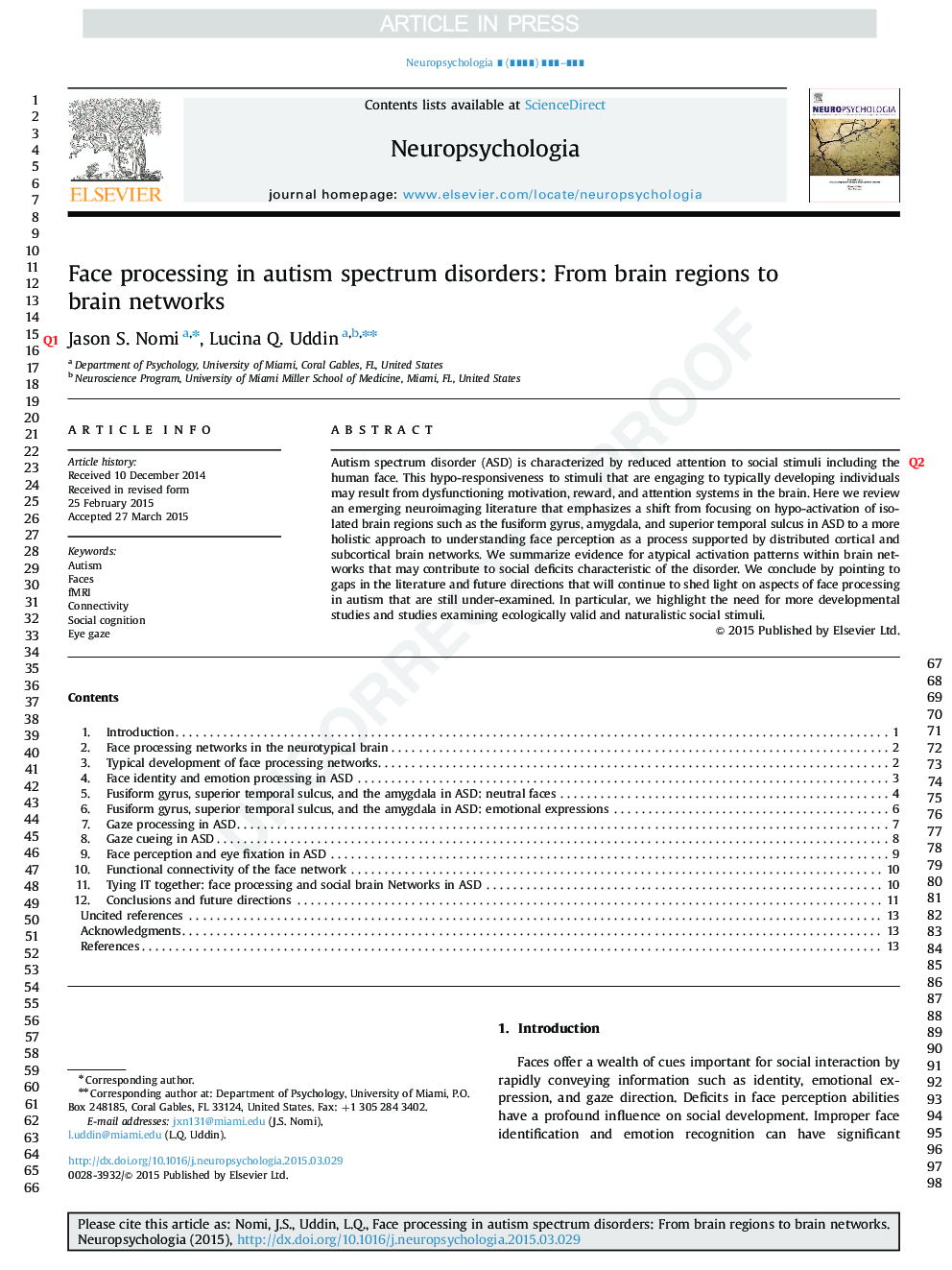| Article ID | Journal | Published Year | Pages | File Type |
|---|---|---|---|---|
| 7320106 | Neuropsychologia | 2015 | 16 Pages |
Abstract
Autism spectrum disorder (ASD) is characterized by reduced attention to social stimuli including the human face. This hypo-responsiveness to stimuli that are engaging to typically developing individuals may result from dysfunctioning motivation, reward, and attention systems in the brain. Here we review an emerging neuroimaging literature that emphasizes a shift from focusing on hypo-activation of isolated brain regions such as the fusiform gyrus, amygdala, and superior temporal sulcus in ASD to a more holistic approach to understanding face perception as a process supported by distributed cortical and subcortical brain networks. We summarize evidence for atypical activation patterns within brain networks that may contribute to social deficits characteristic of the disorder. We conclude by pointing to gaps in the literature and future directions that will continue to shed light on aspects of face processing in autism that are still under-examined. In particular, we highlight the need for more developmental studies and studies examining ecologically valid and naturalistic social stimuli.
Related Topics
Life Sciences
Neuroscience
Behavioral Neuroscience
Authors
Jason S. Nomi, Lucina Q. Uddin,
